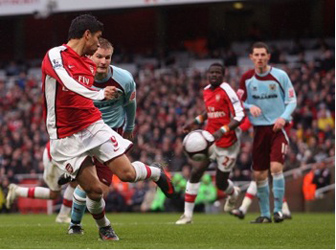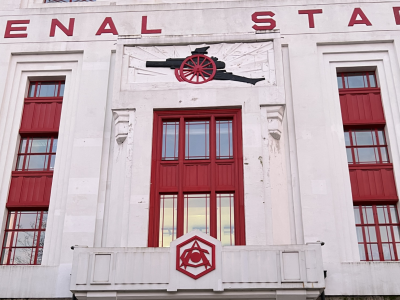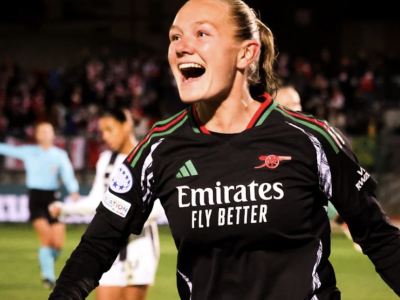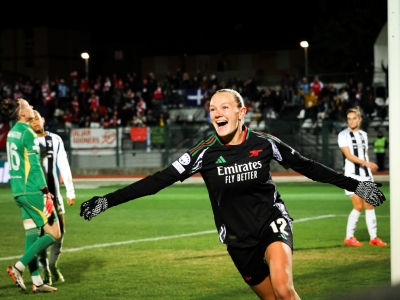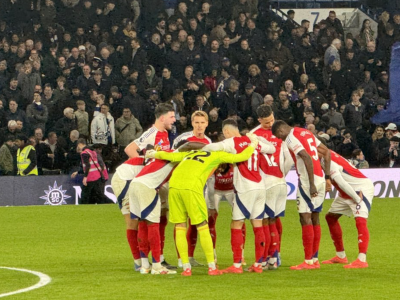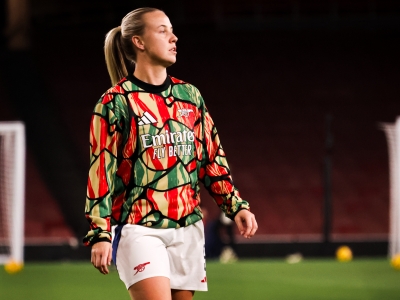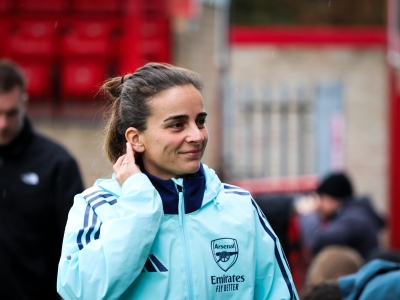(Yesterday’s edition, covering before 1953, can be found here).
Arsenal suffered somewhat of a relative decline almost immediately after their 1953 title win, which would be exemplified by Burnley’s visit to Highbury the following October, as the Clarets inflicted a 2-5 defeat on Arsenal which started a run of five defeats out of six for the Gunners against Burnley, only interrupted by a 4-0 win at Highbury in September 1954 secured by goals from Doug Lishman, Don Roper and two for Tommy Lawton. Burnley in contrast were beginning to enter a golden period in their history with eleven top half finishes in thirteen years. The rise coincided with that of Bob Lord, who ran a chain of local butchers and joined the board of Burnley in 1951, becoming club chairman in 1955.
A controversial figure to say the least, Lord’s dictatorial streak saw him dubbed as the ‘Khrushchev of Burnley’ after the Soviet leader of the period (a retro Putin for anyone unfamiliar with cold war history). Lord also described the Busby babes as ‘a bunch of Teddy Boys’ after they defeated Burnley 3-0 a few weeks after the Munich Air Disaster. A prominent figure within football administration, Lord had also advised the financially stricken Accrington Stanley to withdraw from the Football League (which many felt was a conflict of interest being that Stanley were a local rival hailing from the same catchment area as Lord’s own club).
Burnley reached the summit of English Football in 1959/60, on route meeting Arsenal at Highbury in December. The Clarets inflicted a 2-4 defeat on Arsenal with Jimmy Bloomfield and Joe Haverty on target for the Arsenal. The Gunners’ visit to Turf Moor resulted in a 2-3 defeat with Jackie Henderson scoring both goals for Arsenal. This win took Burnley to within four points of League leaders Tottenham with two games in hand. Spurs had led the table since Christmas, however lost the lead with two defeats over Easter weekend with reigning champions Wolves taking over at the top with just three games to play and looking set for the first hat-trick of league titles since Arsenal in the early thirties, as well as in the running for the elusive League and FA Cup double.
Burnley had failed to top the table all season and after the final Saturday both Wolves and Spurs had completed their season with victories, while Burnley drew at home to Fulham with one game left to play and a point behind the leaders. Burnley’s final game forty eight hours on was away to sixteenth place Man City at Maine Road, where a sell-out crowd of 65,981 turned out (which apparently included Wolves fans hoping to witness the moment their side would secure a third straight title). Burnley secured a 2-1 win that night and their second league title. The following season, the Clarets entered the European Cup and played French side Stade De Rheims in the first round in November.
Burnley won 2-0 in the first round at Turf Moor, though lost 2-3 in the second leg at the Parc De Princes, but proceeding to the next round 5-4 on aggregate. Three days on, at the start of December 1960 reigning league champions Burnley visited run away league leaders Tottenham Hotspur, who were eight points clear at the top. Tottenham raced into a four goal lead, though Burnley pulled one back before half time going in 1-4 down. A superb second half fight back from the Clarets saw them steal a 4-4 draw, which initiated an intense dual between the two sides throughout the early sixties. Two weeks on and a week before Christmas 1960, Burnley visited Highbury and inflicted a 2-5 defeat on Arsenal with David Herd and Geoff Strong on target for the Gunners.
Into the New Year, Burnley’s European Cup trail continued with a Quarter Final tie with German Champions SV Hamburg. At Turf Moor Burnley ran out 3-1 winners in the first leg, however two months on the second leg in Hamburg saw the German side inflict a 1-4 defeat on the Clarets to eliminate the Lancastrian side 4-5 on aggregate. As Tottenham sealed their last title win, Burnley finished the League season in fourth place. The Clarets however progressed to the FA Cup Semi Final in 1960/61, though lost to Spurs 0-3. Also in 1961 came the abolition of the maximum wage, which meant that with a catchment population of just 80,000, Burnley were suddenly at a massive disadvantage, especially in comparison to clubs from nearby bigger towns such as Manchester and Liverpool.
The 1961/62 season would kick off with Burnley visiting Highbury on the opening day, which ended in a 2-2 draw, with two goals from Mel Charles. The Clarets would again be involved in the title race, taking the top spot in early September after seven games and remaining in pole position until the end of March, though in between would lose 2-0 to Arsenal at Turf Moor a week before Christmas with goals from Mel Charles and Alan Skirton. The Clarets also were in the running to emulate Spurs’s feat of the League and FA Cup double of the previous season. In their Quarter Final tie with Sheffield United at Bramall Lane, the tie was held up when a ten yard stretch of railings collapsed and fifty people were injured.
Burnley went on to win the tie 1-0. In the Semi Final at Villa Park with Fulham the two sides played out a 1-1 draw, before the Clarets won the replay 2-1 at Filbert Street the following week. By this point, Alf Ramsey’s Ipswich Town had pulled level on points in the League, though Burnley’s Cup run gave them three games in hand before a run of just one win in seven games meant that Ipswich had overhauled the Clarets at the top of the table by inflicting a 0-3 defeat on Arsenal and a 2-0 win over Aston Villa on the last day meant the title headed to Portman Road.
The Clarets would also lose the 1962 FA Cup Final 1-3 to Tottenham Hotspur. Burnley would however get their revenge on Tottenham in 1962/63, after being drawn away at White Hart Lane in the third round. On a frozen white pitch, the Clarets would hammer Spurs 3-0 to end their period as England’s premier Cup side in the early 1960s, with Terry Dyson taking his frustrations out by swinging a punch at the Burnley goalkeeper leading to a flare up between both sets of players @01.45. Burnley however would be eliminated from the FA Cup in the next round and finish third in the League, seven points behind Champions Everton, though achieving their fourth top four finish in a row.
The following season, Arsenal would visit Turf Moor at the end of September, leaving with a 3-0 win with goals from George Armstrong and two for Geoff Strong. The Gunners did the Double over Burnley with a 3-2 win at Highbury in February with goals from Terry Anderson, George Armstrong and Geoff Strong. In 1963/64 Burnley slipped to ninth position, though in their continuing saga with Tottenham would inflict a 7-2 hammering on Spurs when they visited Turf Moor in April. In October 1964 Burnley’s visit to Highbury would end in the same score line as the previous February, with Joe Baker, Jon Sammels and Peter Simpson on target for the Gunners. Making his Arsenal debut that game would be Tony Burns, who played most of the 1964/65 season though conceded forty seven goals in just thirty one appearances and would exit for Brighton & Hove Albion at the end of the season.
That season Spurs and Burnley clashed in the FA Cup again, with the Clarets crashing out 3-4 and Alan Gilzean grabbing a hat-trick for Spurs. 1964/65 would also be the year in which Match of the Day would first appear on the Nation’s TV screens, however one ground in which you would never find the TV cameras would be Burnley’s Turf Moor as maverick Chairman Bob Lord had been a staunch opponent of football on TV and disallowed their entry. In one incident with Match of the Day at Turf Moor, Lord was quoted in saying that: ‘If the BBC don’t shift their cameras from Turf Moor I’ll be down there myself and will personally burn them. They are on the ground without our consent and I don’t care if even Harold Wilson has given them permission’.
Lord had relented by late 1967 to allow television cameras into Turf Moor to capture Burnley’s League Cup Quarter Final tie with Arsenal, however in a ground breaking move this would be the first competitive football game in the UK which would be available by pay per view. Back in 1964, in the final days of the Conservative Government of Alec Douglas-Home, permission was given for a pay per view service called ‘Pay-TV’, which was jointly-owned by three companies - the Associated British Picture Corporation, British Home Entertainment and British Relay Wireless. The licences granted were binding on Harold Wilson’s incoming Labour government and the service started in 1966, but was limited to just 2,000 residents of the London boroughs of Westminster and Southwark (and extended to Sheffield by the end of the year), who had their television sets fitted with slot boxes which allowed the transmission of non-BBC and ITV programming in exchange for coinage.
The sort of programming on offer had been horror flicks, Horse Racing from Kempton and live coverage of Henry Cooper’s second bout with Muhammad Ali, which took place at Highbury in May 1966. The first football game shown live on Pay-TV had been a friendly between Chelsea and Real Madrid at Stamford Bridge a year earlier, which Chelsea won 2-0. Arsenal’s visit to Turf Moor the previous April resulted in a 4-1 win for Arsenal, with goals from George Armstrong, Colin Addison, George Graham and Peter Simpson. The very few who did pay to watch the League Cup Quarter Final tie at Turf Moor were however to get their ten shillings worth of entertainment as the two sides played out a thrilling 3-3 draw with goals from Lochhead, O'Neil and Irvine for Burnley, while Arsenal’s goals came from Frank McLintock and two for George Graham.
The whole sixties experiment with ‘Pay-TV’ however was not to last and by the end of the following year, Harold Wilson’s Labour government proceeded to scrap the service after turning down Pay-TV’s request for authorization to expand the service for up to a quarter of a million homes in London after ‘bearing in mind wider economic and social considerations’, with Labour MP Jack Ashley in parliament stating in support that: ‘(the) decision to kill the experiment will be warmly welcomed, because Pay-TV discriminates against low income groups, who cannot afford to pay between 6s and £2 per night for programmes?’.
Meanwhile, three days on from the Quarter Final tie, the two sides met again at Turf Moor, though Burnley inflicted a 0-1 defeat on Arsenal. Bob Lord’s opposition to Match of the Day had lessened to the point of allowing the BBC into Turf Moor for the fixture, however his opposition to televised football continued and in an anti-Semitic quote while giving a speech to the Variety Club in 1974 he stated: ‘We have to stand up against a move to get soccer on the cheap by the Jews who run television’ (this comment upset Leeds Utd’s Jewish chairman Manny Cussins to such an extent that he was barred from the Elland Road boardroom for Burnley’s next visit there).
One remnant of Bob Lord’s influence all these years on however is that of the Saturday 3PM TV blackout which was an idea pursued by the Burnley chairman back in the 1960s with ITV’s very brief experiment with live League Football. Still to this day it is a breach of British broadcasting law to show a televised football match between 2.45PM and 5.15PM on a Saturday during the football season. Arsenal meanwhile met Burnley in their League Cup replay three days on from the League fixture, with Arsenal proceeding to the Semi Final after a 2-1 win with goals from Terry Neill and John Radford – a year in which they would finally reach Wembley after an eighteen year wait, but lose to Leeds United in the final.
Arsenal’s League Cup win over Burnley in 1967/68 would be the start of a run of eight straight wins for Arsenal over Burnley. The following season, Arsenal achieved a 2-0 win over Burnley in the League with two goals from Bobby Gould. In Arsenal’s Double year in 1970/71, the Gunners would visit Burnley in early September and return from Turf Moor with a 2-1 win with goals from John Radford and Ray Kennedy – a win which put Arsenal fourth though left Burnley anchored to the foot of the old First Division without a win in the first eight matches. Burnley’s winless streak would stretch to fourteen games before finally sealing their first win against Crystal Palace at the end of October, before Tottenham would inflict a 0-4 defeat on the Clarets at White Hart Lane before the Match of the Day cameras.
Burnley’s visit to Highbury came in mid-April. The Clarets had moved off of the bottom of the table, however they were six points off of safety with just four games left to play. Burnley had achieved back to back 1-0 wins over fellow strugglers Blackpool at the bottom of the table and West Ham who were one place above them. Arsenal in contrast, since losing away at Derby County at the end of February had won eight games on the bounce ahead of Burnley’s visit to Highbury. Arsenal would take both points again with a 1-0 win secured by a Charlie George penalty, which put Burnley on the brink of dropping out of the top tier for the first time in twenty four years. The following week Burnley’s relegation was secured with a 1-2 defeat at home to Derby.
Burnley spent two seasons in the second tier before returning in 1972/73 as Second tier champions. That season, Burnley introduced the ‘League Liner’ for travelling football fans to the Clarets away fixture at QPR, however Burnley were defeated 0-2 at Loftus Road. The Second tier title was secured a win at local rivals Preston caught here on private cine-camera film. On Burnley’s return to the top flight, Arsenal’s first visit to Turf Moor came a week before Christmas 1973, inflicting a 1-2 defeat on the Gunners, whose only goal was scored by John Radford. Burnley first visit to Highbury in nearly three years came in early February 1974, which ended in a 1-1 draw with Alan Ball on target for Arsenal.

